-
 Bitcoin
Bitcoin $106,754.6083
1.33% -
 Ethereum
Ethereum $2,625.8249
3.80% -
 Tether USDt
Tether USDt $1.0001
-0.03% -
 XRP
XRP $2.1891
1.67% -
 BNB
BNB $654.5220
0.66% -
 Solana
Solana $156.9428
7.28% -
 USDC
USDC $0.9998
0.00% -
 Dogecoin
Dogecoin $0.1780
1.14% -
 TRON
TRON $0.2706
-0.16% -
 Cardano
Cardano $0.6470
2.77% -
 Hyperliquid
Hyperliquid $44.6467
10.24% -
 Sui
Sui $3.1128
3.86% -
 Bitcoin Cash
Bitcoin Cash $455.7646
3.00% -
 Chainlink
Chainlink $13.6858
4.08% -
 UNUS SED LEO
UNUS SED LEO $9.2682
0.21% -
 Avalanche
Avalanche $19.7433
3.79% -
 Stellar
Stellar $0.2616
1.64% -
 Toncoin
Toncoin $3.0222
2.19% -
 Shiba Inu
Shiba Inu $0.0...01220
1.49% -
 Hedera
Hedera $0.1580
2.75% -
 Litecoin
Litecoin $87.4964
2.29% -
 Polkadot
Polkadot $3.8958
3.05% -
 Ethena USDe
Ethena USDe $1.0000
-0.04% -
 Monero
Monero $317.2263
0.26% -
 Bitget Token
Bitget Token $4.5985
1.68% -
 Dai
Dai $0.9999
0.00% -
 Pepe
Pepe $0.0...01140
2.44% -
 Uniswap
Uniswap $7.6065
5.29% -
 Pi
Pi $0.6042
-2.00% -
 Aave
Aave $289.6343
6.02%
Is the appearance of KDJ golden cross a buy signal? How to judge true or false breakthroughs?
The KDJ golden cross signals bullish momentum in crypto trading but requires confirmation from volume, price action, and other indicators to avoid false breakouts.
Jun 16, 2025 at 06:22 am
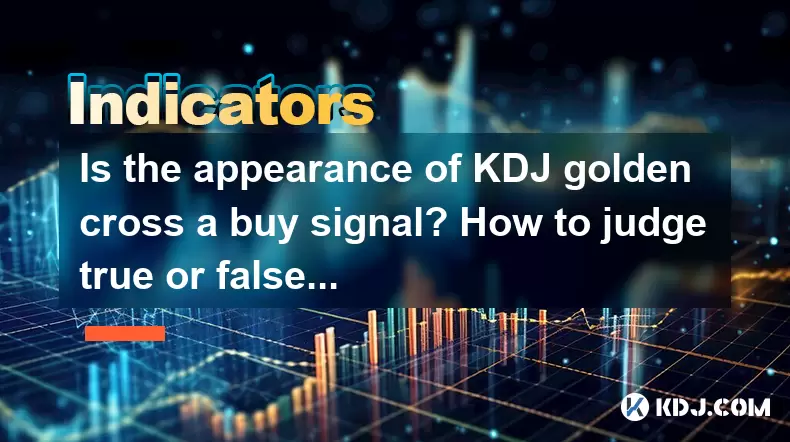
Understanding the KDJ Indicator in Cryptocurrency Trading
The KDJ indicator, also known as the Stochastic Oscillator, is a momentum oscillator widely used in cryptocurrency trading. It helps traders identify overbought or oversold conditions and potential trend reversals. The indicator consists of three lines: the %K line, the %D line, and the J line. When the %K line crosses above the %D line, it forms what is called a KDJ golden cross, which many traders interpret as a buy signal.
However, in the volatile world of cryptocurrencies, a simple crossover does not always guarantee a profitable trade. Understanding how to interpret this signal accurately and distinguishing between real and false breakouts is crucial for successful trading.
Important Note:
In crypto markets, due to high volatility and frequent pump-and-dump schemes, the KDJ golden cross must be confirmed with other indicators or price action analysis before taking any trading decision.How Does the KDJ Golden Cross Work?
The KDJ golden cross occurs when the fast stochastic line (%K) crosses upward through the slow signal line (%D), typically indicating that momentum is shifting from bearish to bullish. This often happens after a downtrend and may suggest that buyers are gaining control.
- %K Line: Represents the current closing price relative to the recent price range.
- %D Line: A moving average of the %K line, smoothing out fluctuations.
- J Line: Often ignored by novice traders, but can provide additional insights into momentum strength.
When the KDJ golden cross appears below the 20 level, it suggests strong oversold conditions followed by a possible reversal. Traders should look for confirmation such as:
- Increasing volume
- Positive candlestick patterns (e.g., hammer, engulfing)
- Support levels holding
It’s essential to remember that while the golden cross is a bullish signal, it should not be used in isolation without considering the broader market context.
Identifying False Breakouts After a KDJ Golden Cross
In cryptocurrency trading, false breakouts are common due to sudden surges in volatility and manipulative practices. A false breakout happens when the price moves beyond a key level (like support/resistance or moving averages) but quickly reverses, trapping traders who entered based on that move.
To avoid being caught in a false breakout after a KDJ golden cross, consider the following:
- Check Volume: Genuine breakouts usually come with a surge in volume. If the price rises but volume remains low, it could indicate weakness.
- Use Price Action: Look for strong candles like bullish engulfing or pin bars. Avoid entering if the candle closes back within the previous range.
- Confirm with Moving Averages: If the price breaks above a key moving average (e.g., 50-period EMA) along with the KDJ golden cross, it increases the probability of a real move.
- Watch for Divergence: If the price makes higher highs but the KDJ fails to do so, it signals hidden weakness.
Critical Insight:
Always wait for at least one candle to close beyond the resistance/support level before confirming a breakout. Impulsive entries often lead to losses.Combining KDJ with Other Indicators for Better Accuracy
Relying solely on the KDJ golden cross can be risky. Combining it with other tools enhances its predictive power:
- RSI (Relative Strength Index): Confirm that RSI is not overbought (above 70). If both RSI and KDJ show bullish signs, the signal becomes stronger.
- MACD (Moving Average Convergence Divergence): A MACD line crossing above the signal line confirms the bullish shift.
- Bollinger Bands: If the price touches the lower band and the KDJ golden cross forms, it might indicate a bounce.
Here's a sample strategy using multiple indicators:
- Wait for the KDJ golden cross to appear.
- Ensure RSI is rising from below 30.
- Confirm that the MACD histogram is expanding positively.
- Enter the trade only if the price closes above a key resistance level.
By layering these confirmations, traders reduce the chances of acting on a false signal.
Practical Example: Evaluating a KDJ Golden Cross in BTC/USDT
Let’s take a practical scenario involving BTC/USDT on a 4-hour chart:
- Initial Signal: The %K line crosses above the %D line below the 20 level — forming a KDJ golden cross.
- Volume Check: Volume spikes significantly compared to the last few candles.
- Price Action: A bullish engulfing candle forms right after the cross.
- Support Confirmation: The price finds support near the 50-period EMA.
- Entry Trigger: The next candle closes above the immediate resistance level.
In this case, the trader could enter a long position with a stop-loss just below the recent swing low. However, if the volume was weak or the price closed back inside the consolidation zone, the trader should hold off.
This example shows how to filter out noise and focus on high-probability setups using technical tools alongside the KDJ indicator.
Frequently Asked Questions
Q: Can the KDJ golden cross be used in all timeframes?
A: Yes, the KDJ golden cross works across various timeframes, but shorter ones (like 15-minute or 1-hour charts) tend to produce more false signals due to increased volatility. For better accuracy, use it on higher timeframes like 4-hour or daily charts.
Q: What is the ideal setting for the KDJ indicator in crypto trading?
A: The default setting is usually (9,3,3) — meaning 9-period %K, 3-period smoothing for %D, and J calculated accordingly. Some traders adjust it to (14,3,3) for smoother signals, especially in highly volatile markets.
Q: How reliable is the KDJ indicator during sideways markets?
A: During sideways or choppy markets, the KDJ indicator tends to whipsaw, giving many false signals. It performs best in trending environments. Use it cautiously and combine with range-bound strategies when the market lacks direction.
Q: Is the KDJ golden cross applicable to altcoins as well?
A: Absolutely. The KDJ golden cross applies to all cryptocurrencies, including major coins like ETH, BNB, and smaller altcoins. However, due to their higher volatility, altcoins may require tighter stop-losses and more confirmation filters.
Disclaimer:info@kdj.com
The information provided is not trading advice. kdj.com does not assume any responsibility for any investments made based on the information provided in this article. Cryptocurrencies are highly volatile and it is highly recommended that you invest with caution after thorough research!
If you believe that the content used on this website infringes your copyright, please contact us immediately (info@kdj.com) and we will delete it promptly.
- 2025-W Uncirculated American Gold Eagle and Dr. Vera Rubin Quarter Mark New Products
- 2025-06-13 06:25:13
- Ruvi AI (RVU) Leverages Blockchain and Artificial Intelligence to Disrupt Marketing, Entertainment, and Finance
- 2025-06-13 07:05:12
- H100 Group AB Raises 101 Million SEK (Approximately $10.6 Million) to Bolster Bitcoin Reserves
- 2025-06-13 06:25:13
- Galaxy Digital CEO Mike Novogratz Says Bitcoin Will Replace Gold and Go to $1,000,000
- 2025-06-13 06:45:13
- Trust Wallet Token (TWT) Price Drops 5.7% as RWA Integration Plans Ignite Excitement
- 2025-06-13 06:45:13
- Ethereum (ETH) Is in the Second Phase of a Three-Stage Market Cycle
- 2025-06-13 07:25:13
Related knowledge
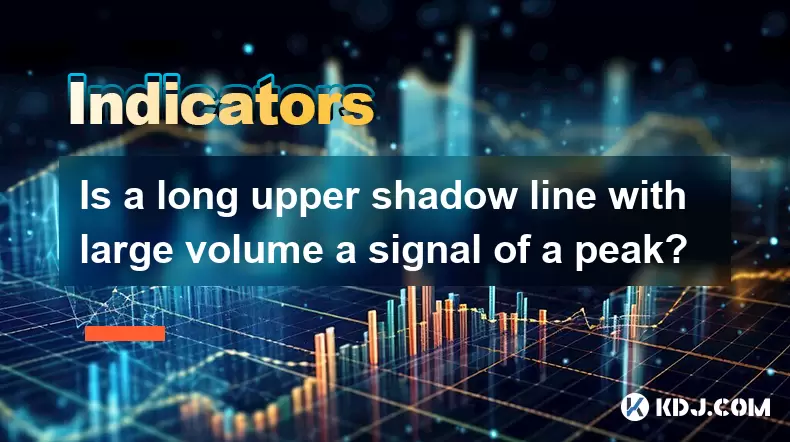
Is a long upper shadow line with large volume a signal of a peak?
Jun 17,2025 at 05:07am
Understanding the Long Upper Shadow LineA long upper shadow line, often referred to as a shooting star or inverted hammer depending on its location in a chart, is a candlestick pattern that indicates potential reversal from an uptrend. This pattern forms when prices rise significantly during the trading period but then fall back to close near the openin...

How to confirm the effectiveness of the average price line support in the time-sharing chart?
Jun 17,2025 at 12:56am
Understanding the Time-Sharing Chart and Its RelevanceIn cryptocurrency trading, time-sharing charts play a crucial role in analyzing short-term price movements. These charts typically display price fluctuations over a specific period, often ranging from minutes to hours. Traders rely on them to make quick decisions based on real-time data. The average ...
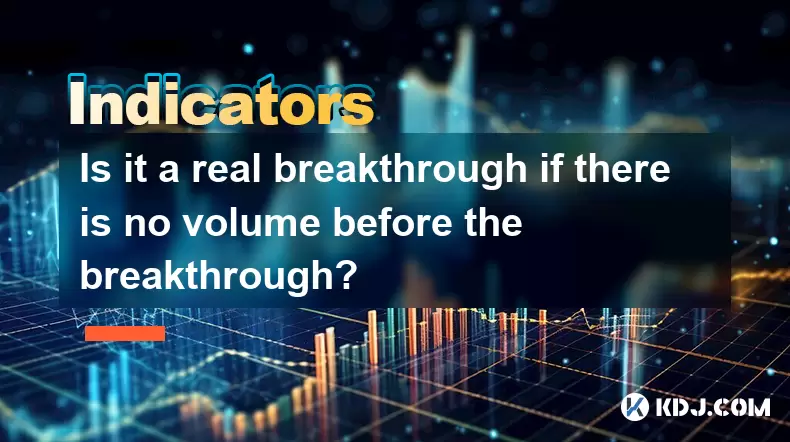
Is it a real breakthrough if there is no volume before the breakthrough?
Jun 17,2025 at 08:03am
Understanding the Concept of a Breakthrough in Cryptocurrency TradingIn cryptocurrency trading, a breakthrough typically refers to a price movement that surpasses a key resistance or support level. Traders often look for such events as potential signals for trend continuation or reversal. However, a crucial factor that determines the strength and reliab...

What does it mean when the momentum indicator breaks above the zero axis?
Jun 17,2025 at 12:43am
Understanding the Momentum IndicatorThe momentum indicator is a technical analysis tool used to measure the speed or velocity of price movements in cryptocurrency markets. It helps traders identify potential trend reversals, overbought or oversold conditions, and confirms existing trends. The indicator typically oscillates around a zero line, with value...
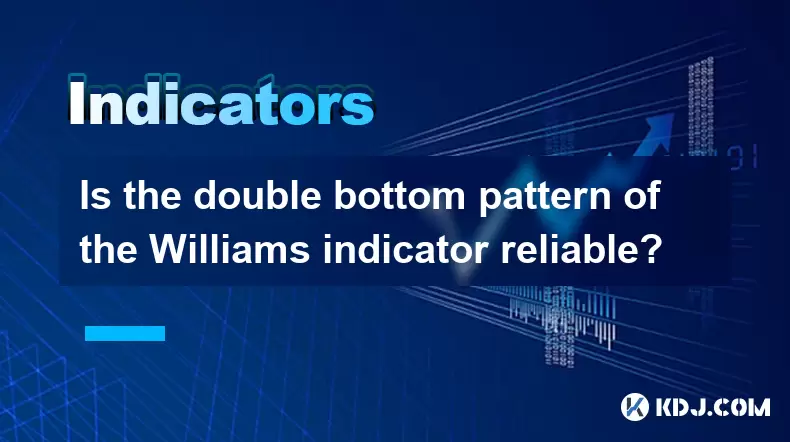
Is the double bottom pattern of the Williams indicator reliable?
Jun 17,2025 at 03:56am
Understanding the Williams Indicator and Its SignificanceThe Williams %R indicator, often referred to as Williams Percent Range, is a momentum oscillator used in technical analysis to identify overbought or oversold conditions in the market. Developed by Larry Williams, this indicator fluctuates between 0 and -100, with readings above -20 indicating ove...
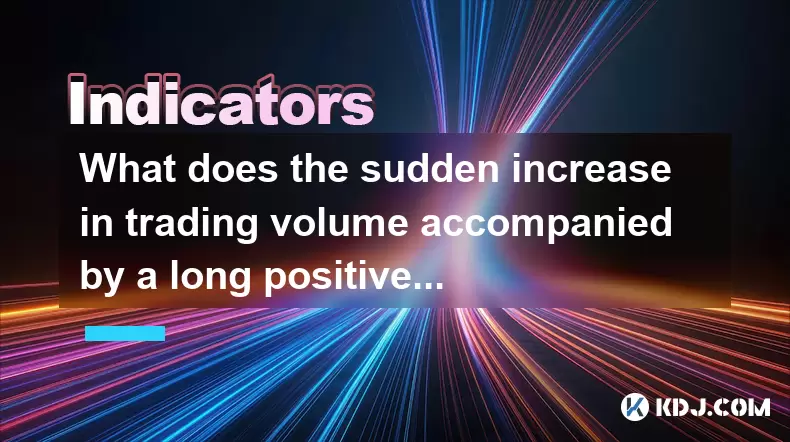
What does the sudden increase in trading volume accompanied by a long positive line mean?
Jun 17,2025 at 06:01am
Understanding the Sudden Surge in Trading VolumeWhen traders observe a sudden increase in trading volume, it typically signals a significant shift in market sentiment. This surge often indicates that more participants are entering or exiting positions, which could be due to news events, macroeconomic data releases, or institutional activity. High tradin...

Is a long upper shadow line with large volume a signal of a peak?
Jun 17,2025 at 05:07am
Understanding the Long Upper Shadow LineA long upper shadow line, often referred to as a shooting star or inverted hammer depending on its location in a chart, is a candlestick pattern that indicates potential reversal from an uptrend. This pattern forms when prices rise significantly during the trading period but then fall back to close near the openin...

How to confirm the effectiveness of the average price line support in the time-sharing chart?
Jun 17,2025 at 12:56am
Understanding the Time-Sharing Chart and Its RelevanceIn cryptocurrency trading, time-sharing charts play a crucial role in analyzing short-term price movements. These charts typically display price fluctuations over a specific period, often ranging from minutes to hours. Traders rely on them to make quick decisions based on real-time data. The average ...

Is it a real breakthrough if there is no volume before the breakthrough?
Jun 17,2025 at 08:03am
Understanding the Concept of a Breakthrough in Cryptocurrency TradingIn cryptocurrency trading, a breakthrough typically refers to a price movement that surpasses a key resistance or support level. Traders often look for such events as potential signals for trend continuation or reversal. However, a crucial factor that determines the strength and reliab...

What does it mean when the momentum indicator breaks above the zero axis?
Jun 17,2025 at 12:43am
Understanding the Momentum IndicatorThe momentum indicator is a technical analysis tool used to measure the speed or velocity of price movements in cryptocurrency markets. It helps traders identify potential trend reversals, overbought or oversold conditions, and confirms existing trends. The indicator typically oscillates around a zero line, with value...

Is the double bottom pattern of the Williams indicator reliable?
Jun 17,2025 at 03:56am
Understanding the Williams Indicator and Its SignificanceThe Williams %R indicator, often referred to as Williams Percent Range, is a momentum oscillator used in technical analysis to identify overbought or oversold conditions in the market. Developed by Larry Williams, this indicator fluctuates between 0 and -100, with readings above -20 indicating ove...

What does the sudden increase in trading volume accompanied by a long positive line mean?
Jun 17,2025 at 06:01am
Understanding the Sudden Surge in Trading VolumeWhen traders observe a sudden increase in trading volume, it typically signals a significant shift in market sentiment. This surge often indicates that more participants are entering or exiting positions, which could be due to news events, macroeconomic data releases, or institutional activity. High tradin...
See all articles

























































































